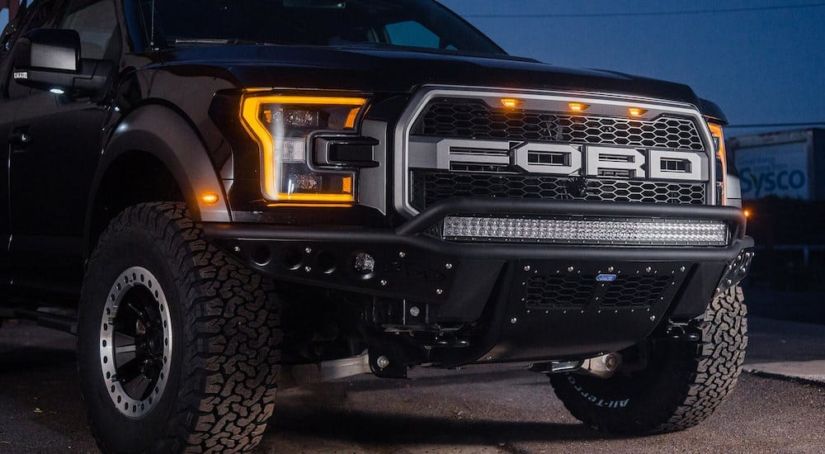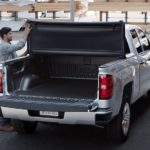It is a debate that has plagued truck owners for years. For a vehicle that is meant to be the workhorse for many individuals, the power that is produced is important. If the truck cannot keep up the demands of professional or personal use, what is the point of having the truck in the first place? Since they are not the most affordable vehicle on the market, most truck owners want to be sure they will have the best performance possible within their budget. This has made the debate over the type of engine to have all the more important. Beyond being academic, this debate represents the truck owner’s drive towards perfection. With enough horsepower and torque under the hood, a truck is more capable of pulling off miracles than anything else on the road. Therefore, this debate is a part of that pursuit: the power the engine puts out will directly reflect what the truck can do. The debate is also seemingly simple on paper: V-6 or V-8? The difference between a couple of cylinders may seem insignificant without the understanding of the power these extra cylinders and pistons can provide. For a truck with some full-size mass in the equation, it will also determine how well the truck accelerates and pulls larger loads. For truck purists, the only answer is a V-8. Nothing but the maximum amount of power and torque will do. Many truck manufacturers have also taken this approach with their heavy-duty trucks. Fuel economy be damned, the only right powerplant is one with the magic number of eight. Others, like Ford, however, have taken a different approach in recent years. Despite conventional wisdom, trucks like the F-150 with an EcoBoost V-6 demonstrate you do not always need extra cylinders to maintain high-performance standards.
The Importance Of The Engine
It is probably obvious to say that the engine is the most important component in a car, truck, or SUV. For full-size trucks, in particular, the engine gives the vehicle its performance capability. Without it, a truck would be nothing more than a very heavy, very expensive paperweight. As a result, the type of engine used is one of the most important decisions any manufacturer or customer can make depending on who has the final say.
The physics of an engine rely on combustion. When you add a fuel like gasoline to a mixture of oxygen and heat, the fuel combusts, releasing energy. If you have a cylinder and piston in the equation, you get a force that can drive the wheels of a car. The more cylinders you have, the more performance you can get.
This has been the conventional way of thinking about engine science and technology for decades. “More is better” has driven countless truck manufacturers and owners alike. That is why the V-8 has become the standard for high-performance trucks, especially in professional and commercial settings. While smaller midsize trucks usually come with either four-cylinder or V-6 engines, anything that is designed to tow a lot of weight will probably have a V-8 in the engine bay.
What is wrong with a V-8? Honestly, nothing. Eight cylinders is a great engine layout to have on paper. For trucks that require the most amount of performance and capability, a V-8 is an efficient way to get the performance required to get the job done. More cylinders means greater energy output from the engine itself in some cases.
Unfortunately, the V-8 isn’t the best solution for everything a truck owner may need from the vehicle.
The Disadvantages Of Eight Cylinders
One inescapable reality with engines is fuel efficiency. Unfortunately, engines require fuel in order work. If you have an empty tank, the engine itself just becomes a part of the heavy paperweight.
Fuel efficiency is one of the things that has become more and more important with truck design over the past decade. Previously, when trucks were getting around 10 miles to the gallon, fuel efficiency was a luxury perk. Most truck owners knew they were making a large sacrifice for the extra power.
This was largely due to the inefficiency of the V-8 design. With the greater power, you get from eight cylinders comes a more fuel-thirsty engine. The fuel consumption rate of V-8 engines is much higher than four-cylinder or V-6 versions. Ultimately, a higher consumption rate means a lower fuel efficiency.
Since gasoline and diesel prices fluctuate up and down, there are times when the average truck owner may regret owning such a thirsty engine. This makes the alternative V-6 setup a more attractive idea. To really appreciate what a V-6 engine can do in a full-size truck, however, you have to rethink what you know about engine design and capability.
V-6 Advancements
Engine science and development has come a long way since the 20th century. The notion that trucks have to be inefficient fuel guzzlers no longer applies. Thanks to more intelligent design and some significant technological advancements, it is now possible to have better fuel efficiency in a truck. This is the area that Ford has developed with their V-6 EcoBoost engines found in the F-150.
The trick is maximizing the efficiency of the engine itself. Beyond just fuel consumption, one area that Ford has improved upon is the efficiency of the individual parts and the overall process. They maximize the output in each cylinder. With Ford engine technology, six finely tuned pistons can do the work of eight standard pistons. This is why you will see comparable horsepower and torque ratings when comparing Ford trucks with the competitors.
At the same time, you will naturally get the benefits of greater fuel economy with the V-6 design. Since less fuel is needed to get the same output capability, you can expect a higher fuel rating in the range of 20 to 25 miles per gallon. This makes a truck like the F-150 a great daily commuter in urban environments where a standard V-8 would quickly become a gas guzzling money pit.
Seeing What A V-6 Can Really Do
Looking at the science and numbers behind the differences between a V-6 and V-8 is not enough to truly appreciate what a V-6 EcoBoost engine can do for you. The only way to really see what this technology can do is to get behind the wheel.



